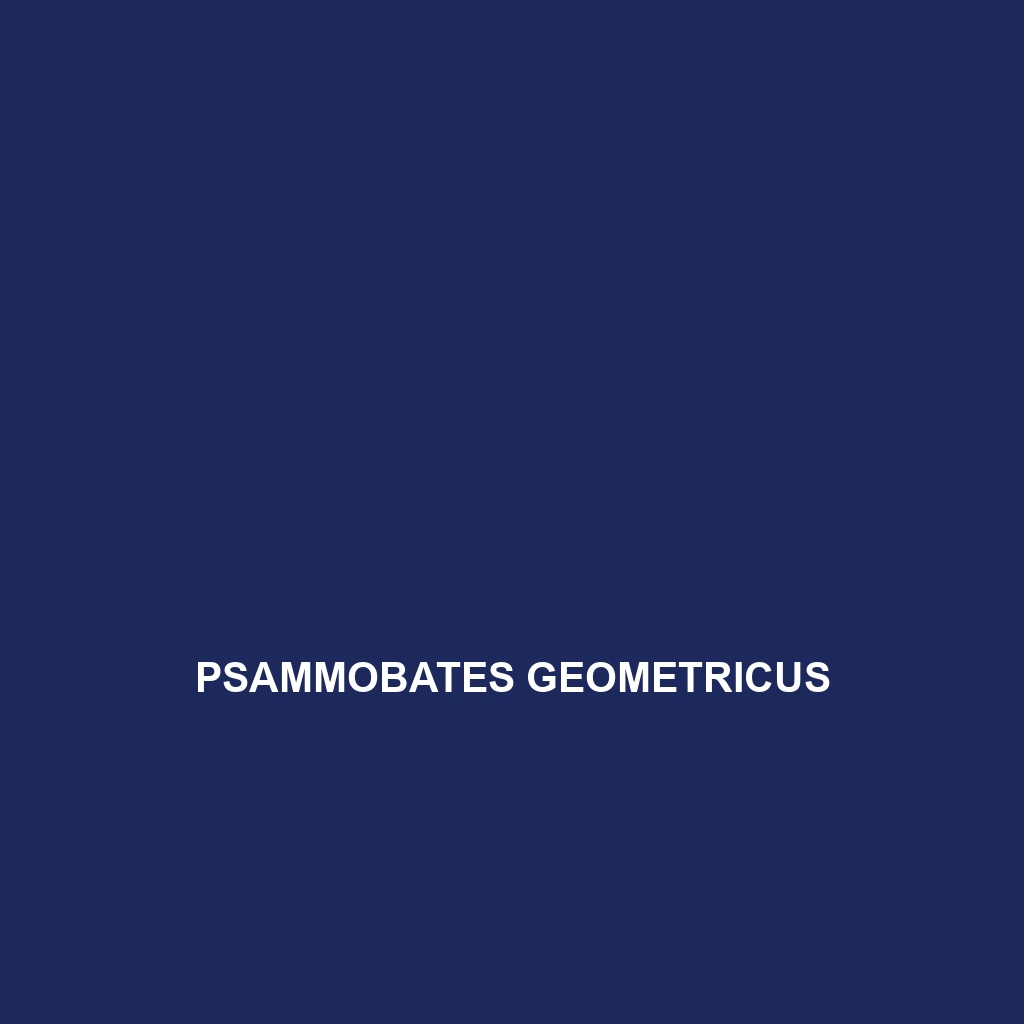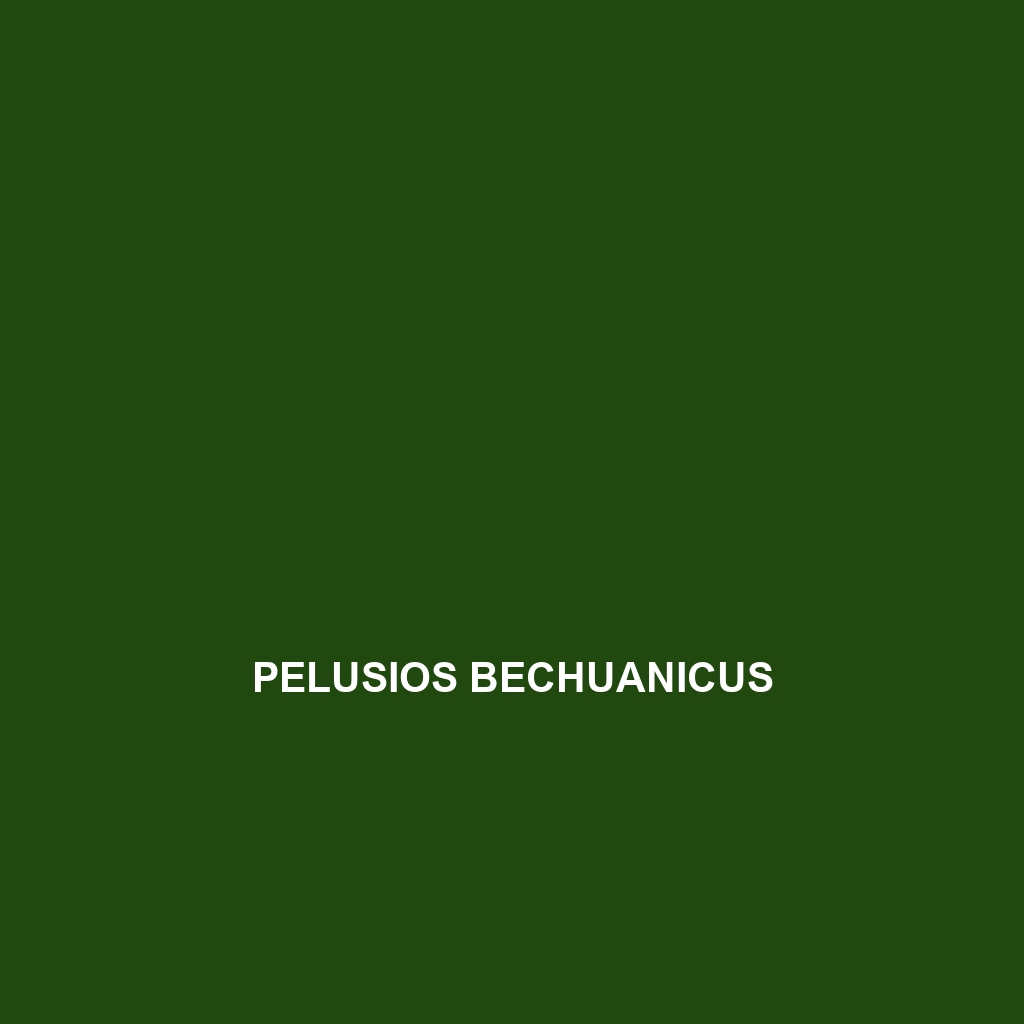<b>Pyxis planicauda</b>, commonly known as the flat-tailed tortoise, is a vulnerable species native to the rainforests and savannas of Madagascar. Characterized by its distinctive flat carapace, nocturnal behavior, and herbivorous diet, this tortoise plays a vital role in its ecosystem through seed dispersal and soil aeration.
Tag: tortoise habitat
Pseudemydura umbrina
<b>Pseudemydura umbrina</b>, commonly known as the western swamp tortoise, is an endangered species found in the rainforests and wetlands of southwestern Australia. This semi-aquatic omnivore reaches a length of 20 to 25 centimeters and plays a crucial role in its ecosystem by maintaining plant health and supporting biodiversity.
Psammobates geometricus
Psammobates geometricus, known as the geometric tortoise, is a vibrant species found in the savannas and temperate forests of southern Africa. Recognizable by its tessellated shell pattern in yellow, black, and brown, this herbivorous tortoise plays a crucial role in its ecosystem, contributing to seed dispersal and plant diversity.
Pyxis planicauda
<b>Pyxis planicauda</b>, commonly known as the flat-tailed tortoise, is a vulnerable species native to the rainforests and savannas of Madagascar. Characterized by its distinctive flat carapace, nocturnal behavior, and herbivorous diet, this tortoise plays a vital role in its ecosystem through seed dispersal and soil aeration.
Pseudemydura umbrina
<b>Pseudemydura umbrina</b>, commonly known as the western swamp tortoise, is an endangered species found in the rainforests and wetlands of southwestern Australia. This semi-aquatic omnivore reaches a length of 20 to 25 centimeters and plays a crucial role in its ecosystem by maintaining plant health and supporting biodiversity.
Psammobates geometricus
Psammobates geometricus, known as the geometric tortoise, is a vibrant species found in the savannas and temperate forests of southern Africa. Recognizable by its tessellated shell pattern in yellow, black, and brown, this herbivorous tortoise plays a crucial role in its ecosystem, contributing to seed dispersal and plant diversity.
Pelusios bechuanicus
<p><b>Pelusios bechuanicus</b>, known as the <i>Bechuana Tortoise</i>, thrives in the freshwater habitats of southern Africa, boasting a distinctive oval-shaped shell and webbed feet for adept swimming. Its omnivorous diet includes aquatic vegetation and small invertebrates, playing a crucial role in maintaining the health of freshwater ecosystems.</p>
Parapistocalamus hedigeri
<p>Discover the <b>Parapistocalamus hedigeri</b>, or Hediger's forest tortoise, a vulnerable species from Central and West Africa thriving in humid rainforests. With its striking patterned shell and essential role as a herbivore and seed disperser, this tortoise is crucial for maintaining the ecological balance in its habitat.</p>
Manouria impressa
Discover the Manouria impressa, also known as the Asian giant tortoise, a robust species native to the tropical forests of Southeast Asia. With a distinctive high-domed shell and unique behaviors, this herbivore plays a vital role in its ecosystem as both a seed disperser and a significant part of the food web.
Manouria emys
Introducing the Asian Giant Tortoise (Manouria emys), a remarkable herbivorous species thriving in southeastern Asia's rainforests and savannas, known for its impressive size, reaching up to 80 cm in shell length and 176 lbs in weight. With minimal social behaviors, they exhibit fascinating nesting and foraging habits, playing a crucial role in their ecosystems by contributing to soil health and seed dispersal.








